Title : Rapid identification of Bacillus anthracis biomarkers via mass spectrometry: A review and its implications for biodefense
Abstract:
The rapid and unequivocal identification of pathogenic biological agents is a pivotal cornerstone in biodefense and chemical defense, particularly in light of the persistent threat of bioterrorism. Bioterrorism poses a significant global hazard, with Bacillus anthracis, the Abstract Submission Template etiological agent of anthrax, emerging as a high-priority concern due to its pronounced virulence, the formation of resilient spores, and its close genetic and phenotypic similarity to other Bacillus species, such as Bacillus cereus and Bacillus cereus Biovar anthracis. The precise differentiation among these species constitutes a critical challenge for public health and security, as conventional diagnostic methods, typically relying on culture, staining, and biochemical tests, frequently lack the requisite specificity and speed for effective response in emergency scenarios. MALDI-TOF Mass Spectrometry (Matrix-Assisted Laser Desorption/Ionization Time-of-Flight) offers multifactorial advantages for biodefense and chemical defense. These include rapidity of analysis, which is crucial for emergency response; high specificity and sensitivity, minimizing both false positives and false negatives; and the capability for simultaneous identification of multiple targets within a single sample, thereby enabling efficient screening. However, despite the undeniable benefits of MALDI-TOF for rapid microbial identification, the inherent complexity in differentiating such closely related species as B. anthracis, B. cereus, and B. cereus Biovar anthracis presents a significant challenge. This difficulty stems from the fact that *biomarkers initially proposed as specific for B. anthracis have subsequently been identified in other species within the B. cereus group in later studies. This phenomenon is largely attributable to the high genetic homology among these bacteria, which consequently manifests as highly similar protein profiles. The presence of "near-specific" rather than truly unique markers can lead to ambiguous results or false positives in biodefense contexts, where absolute precision is vital to avert unnecessary alarm or, more critically, to avoid underestimating a genuine threat. This work aimed to present a comprehensive review of B. anthracis biomarkers and the diverse methodologies employed for their identification. Our findings suggest a lack of methodological standardization, which critically impairs the reproducibility of research results.



